Hallowed Ground on Sutter Street
From the time of its dedication on March 23, 1866, the old Temple Emanu-El was a landmark of 19th-century San Francisco.
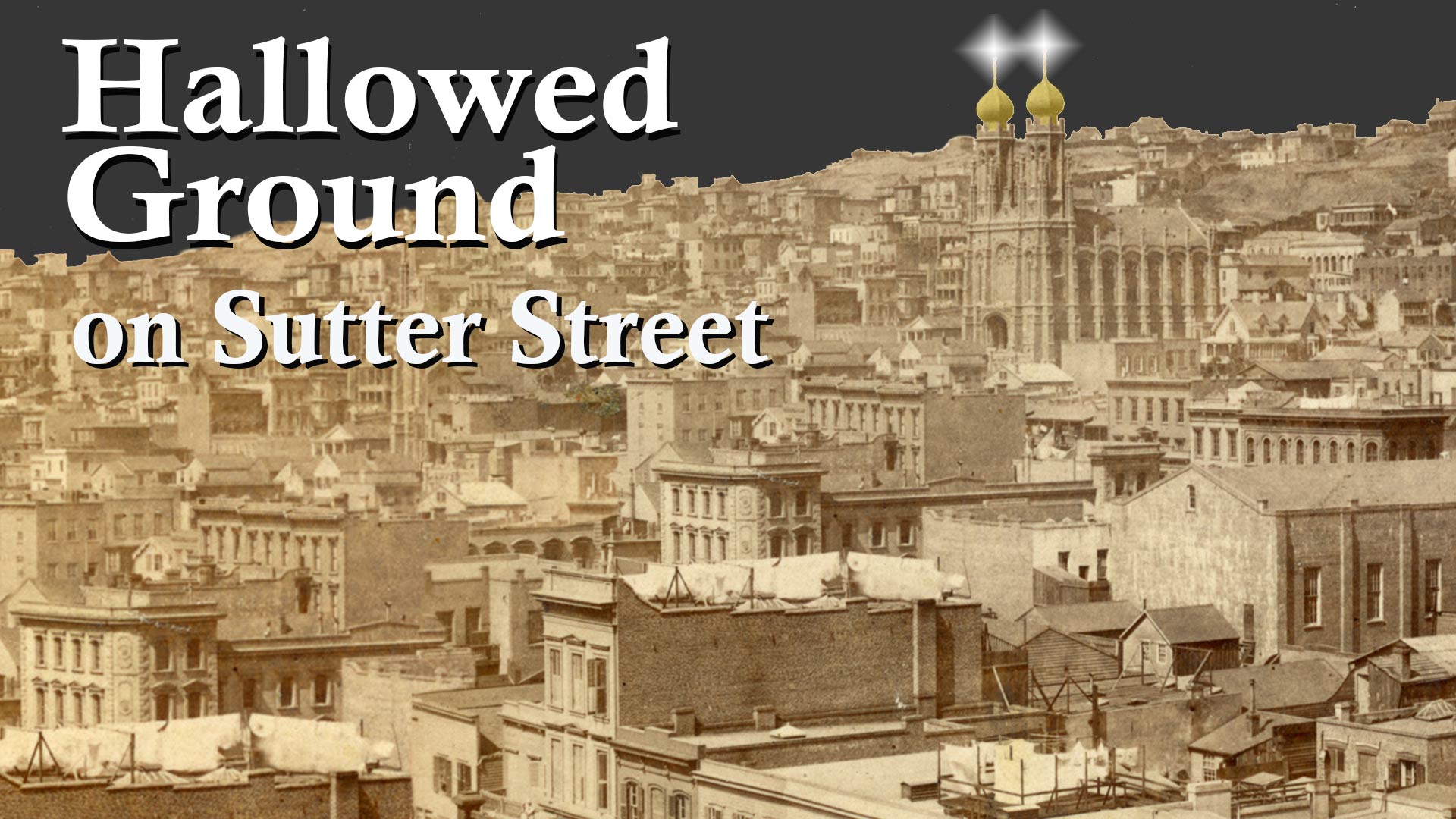
Temple Emanu-El at the corner of Arguello Boulevard and Lake Street is for me a resonant gateway to San Francisco’s Richmond District. The red-clay tile dome served as a notable orientation point of my childhood in the 1970s, a landmark to lead my friends and me back home when we wandered the hilltops of Fort Miley, Buena Vista Park, or Golden Gate Heights.
For me the synagogue dome marks the eastern boundary of the Richmond, along with the spire of St. John’s Presbyterian Church across the street, the brick tower of Roosevelt Middle School down the block, and the Columbarium dome off Geary Boulevard. We naïve and unconsciously disrespectful Catholic boys used the temple courtyard as a terminus of our bike rides up Lake Street, taking one quick loop around the courtyard’s fountain before coasting back west to 11th Avenue.
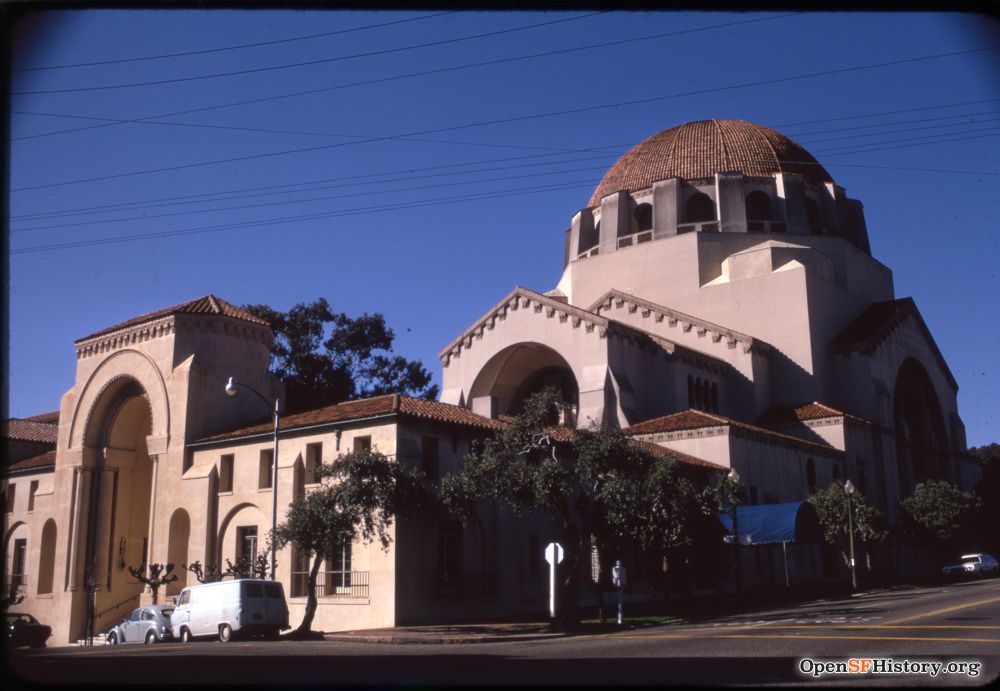
To those of us who enjoy studying historical photographs of San Francisco, the congregation’s antecedent synagogue on Sutter Street between Powell and Stockton Streets also serves as a locational and temporal wayfinder. The old Temple Emanu-El, home of the west coast’s largest Reform Jewish congregation, was a cultural and visual landmark of 19th century San Francisco from the time of its dedication on March 23, 1866. With the open plaza of Union Square to the south and the rising slope of Nob Hill behind, the temple’s twin onion-domed towers stand out in archival photographs and quickly give a researcher a reference point in time and place.
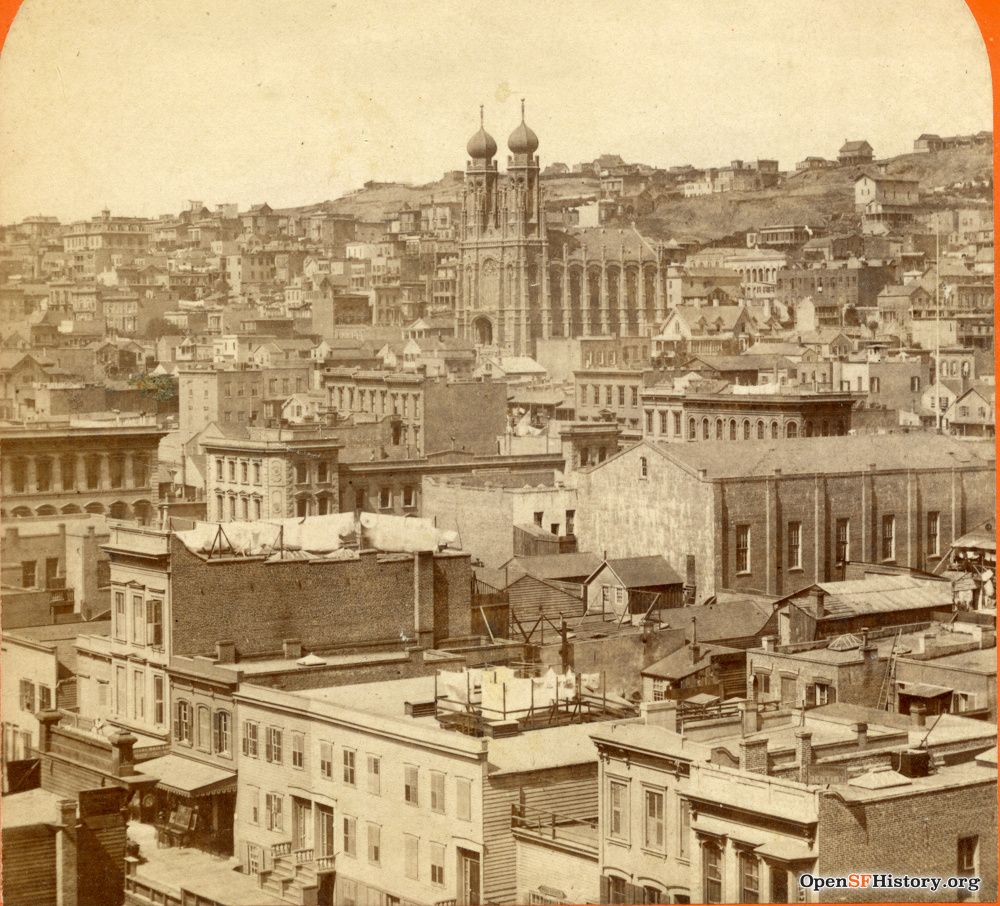
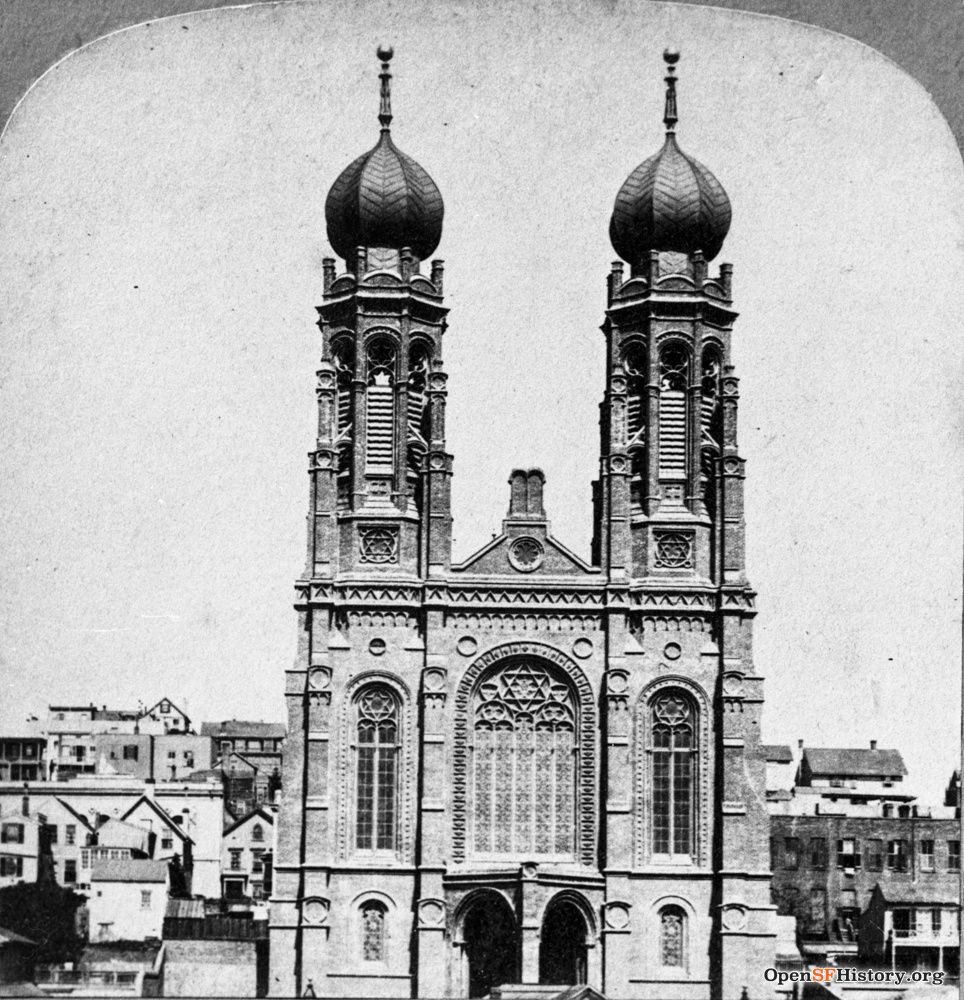
Old photos in gray-scale or sepia do little justice to the majesty of the structure. Temple architect William Patton was an expert in the Gothic Revival style and found ways to incorporate color and light throughout the building’s medieval stateliness. The entry vestibule’s three massive double doors were carved walnut painted green. The interior was illuminated by a series of tall stained glass windows capped by Stars-of-David patterns. Silver-plated reflectors ran the length of the sanctuary’s ribbed ceiling, which was colored in sections of blue, white, and buff detailed with gold stars. The spire bulbs set above each 20-foot-in-circumference octagonal tower glimmered with bronze plate and were topped by finial globes of reflective gold. Historian Fred Rosenbaum has noted how the synagogue towers were beacons of the Bay Area:
One hundred sixty-feet high, these gold-tipped spires were an integral part of the early San Francisco skyline: they were a prominent landmark for ships entering the Golden Gate; they could be seen by hikers across the bay in the Berkeley hills.
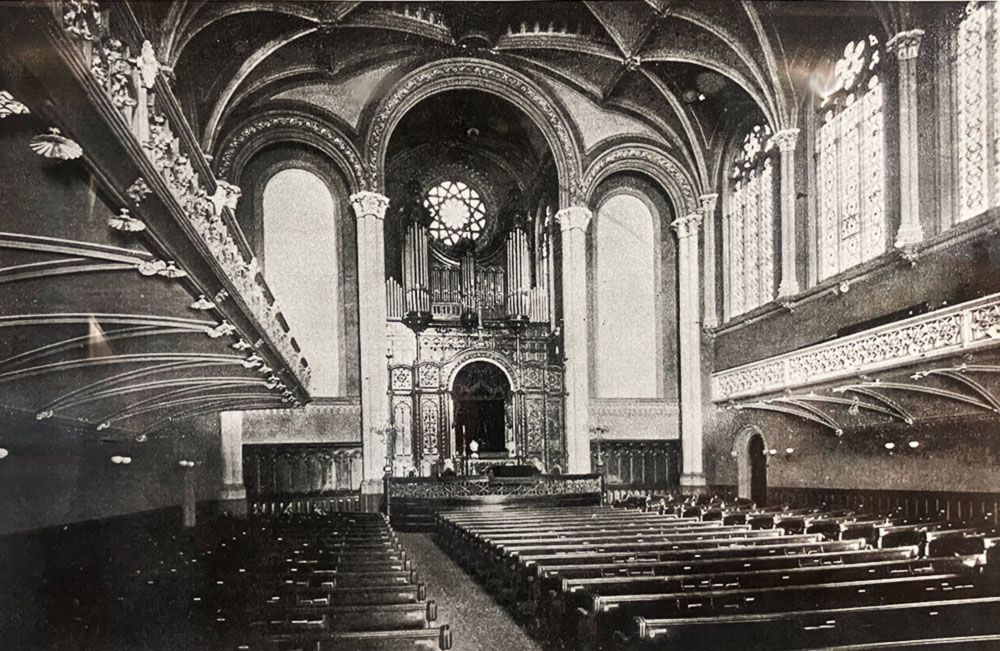
The temple continued to be a point of orientation after the fires following the earthquake of April 18, 1906. While gutted by the maelstrom, the walls and towers of the building survived remarkably intact. In the hundreds of photographs taken after the 1906 earthquake, Temple Emanu-El’s ghostly frame gives the viewer an anchor in a landscape of blackened rubble. The towers mark the north side of Union Square, ashes and debris around it.
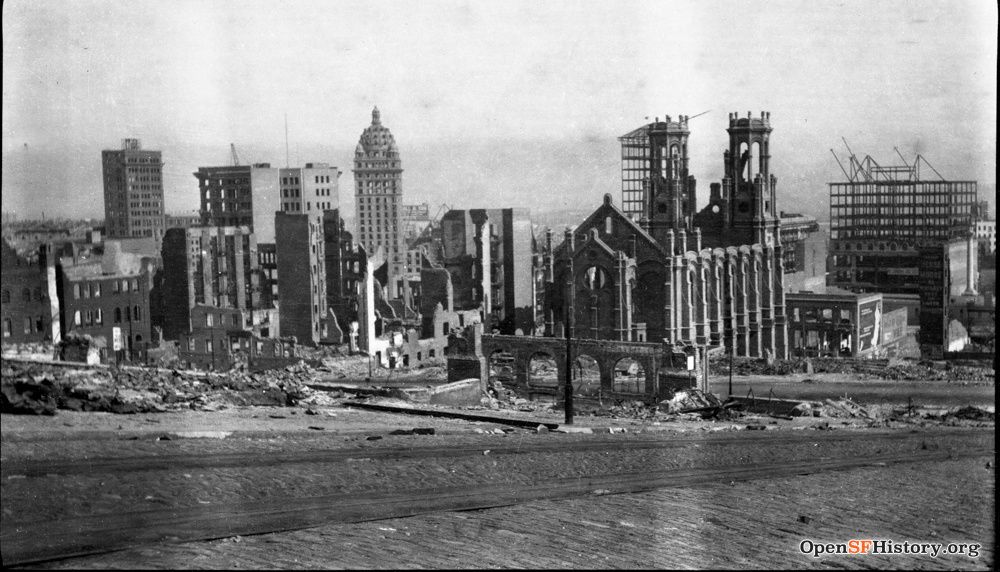
Even before the earthquake, Congregation Emanu-El had been looking to get out of the increasingly commercial Union Square area and find a home on the developing west side. In 1902, the congregation purchased a large lot on the northwest corner of Sutter Street and Van Ness Avenue. (Read what happened to the 1860s house moved from that site after the Emanu-El purchase in The Orphaned Pillar.)
But the 1906 earthquake and fire changed everything. Citywide recovery from the disaster trumped fundraising for a new synagogue. Van Ness Avenue went from a sedate and stately boulevard of mansions and large churches to a bustling temporary commercial strip for large department stores and restaurants burned out of downtown. All was uncertain and unpredictable in the recovery from a monumental society-shaking crisis—a mood similar to San Francisco in 2022.
Congregation Emanu-El directed its energy into restoring the Sutter Street temple and did so quickly. On the 40-year-old frame went new walls and stained glass. Stubby cones replaced the elegant onion-dome spires. In his rededication address on September 1, 1907, Rabbi Jacob Voorsanger called the rebuilt temple “a symbol of our faith and hope, a contribution to the strength that shall soon again distinguish her. This spot is hallowed.”
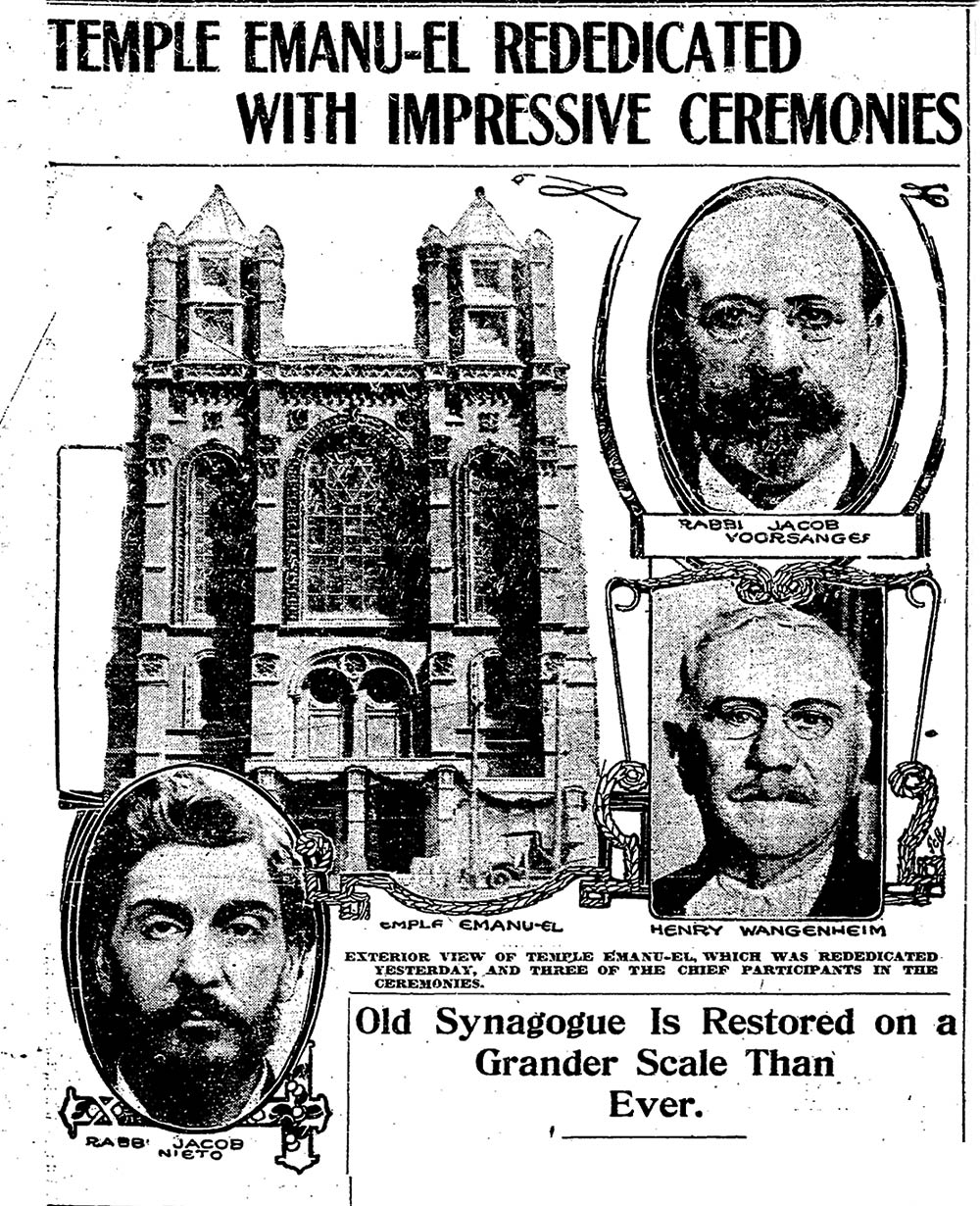
The hallowed Sutter Street lot would be Emanu-El’s home for another 17 years, but the search continued for a new synagogue site. In 1922, the corner of Arguello and Lake was purchased for $140,000. Many members of the congregation lived in the Western Addition, Pacific Heights, and out in the developing avenues, an area which experienced a building boom after the earthquake. In January 1923, the Sutter Street property was sold for $450,000 to finance the new temple complex project in the Richmond District.
A provision of the sale allowed the congregation use of the old synagogue for two years. A building permit for the Arguello temple complex was obtained and ground broken in August 1924. The last service on Sutter Street took place on January 31, 1925, and demolition of the old temple began a week later.
On February 10, 1926, congregation president Henry L. Mayer and Rabbi Louis I. Newman opened a tin box found in a cornerstone cache of the Sutter Street temple. Mementos that had survived the great firestorm of 1906, apparently undiscovered in its post-quake reconstruction, included old stamps, newspapers reporting on the United States Civil War, and incorporation papers of the congregation, which had been established in 1850. Prohibition was in effect in the 1920s and reporters were disappointed not to find a dedicatory bottle of liquor among the cornerstone's contents.
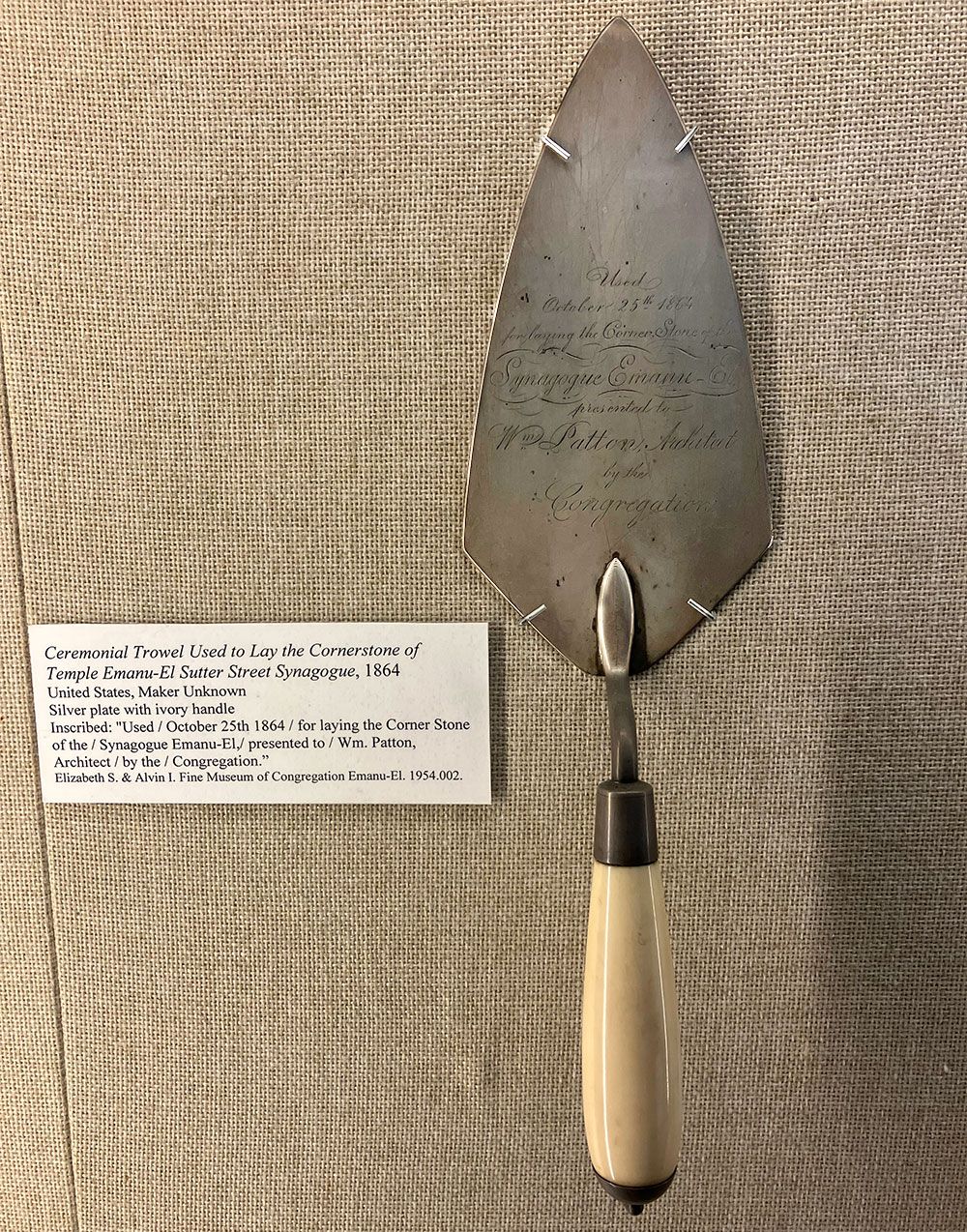
Two weeks later, President Mayer laid the cornerstone of the Arguello Boulevard temple with the same trowel that had dedicated the Sutter Street edifice 61 years earlier. Attending were a dozen members of the congregation who had been at the 1864 ceremony. On April 16, 1926, the first in a series of dedicatory events opened “one of the most beautiful ecclesiastical structures in America.” In attendance were almost 2,000 attendees, including cantors, rabbis, and reverends from up and down the west coast.
Back on the old Sutter Street site another landmark arose, more than equal to the old Temple Emanu-El in grandeur. The 26-story medical office building at 450 Sutter Street opened with its fantastically gilded Mayan-inspired façade and lobby in 1929. It is one of San Francisco’s most significant and stunning buildings, a masterpiece by architect Timothy Pflueger, who designed the Pacific Telegraph and Telephone building, the Castro Theatre, and Oakland’s Paramount Theatre.
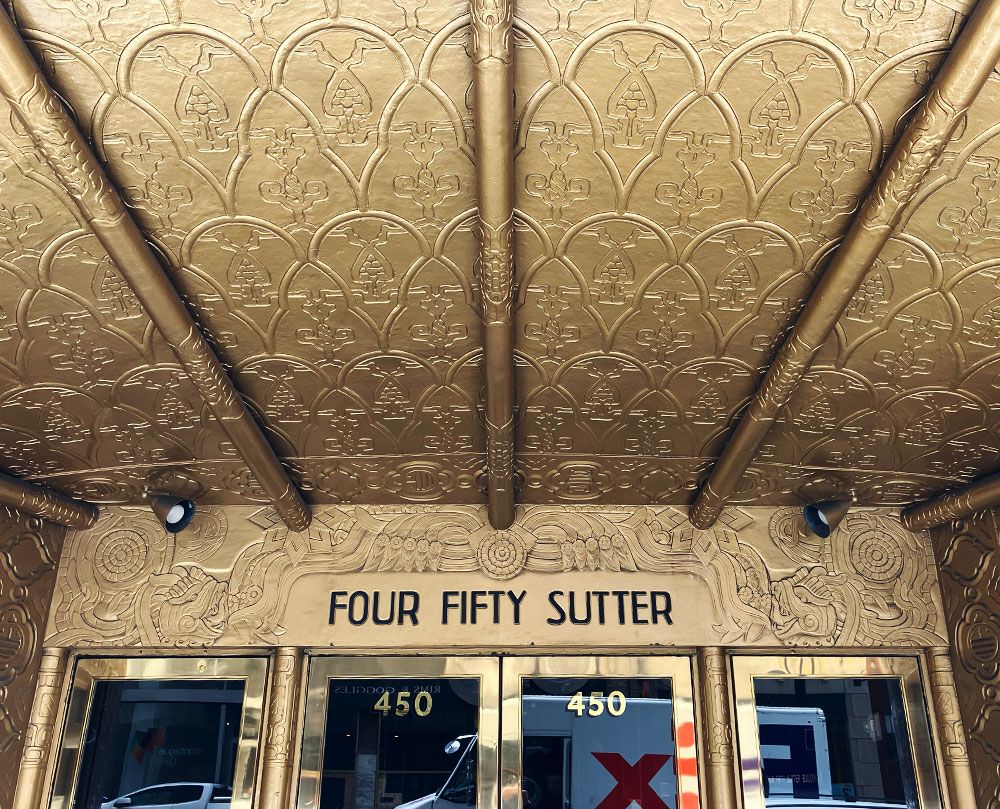
The San Francisco Examiner made a connection to the old synagogue when 450 Sutter opened, seeing Pflueger’s work as a kind of secular temple to medical care:
“Through long use and association, certain sites are looked upon as hallowed ground, and when the Temple Emanu-El’s old synagogue was sold, speculation was rife as to what purpose the property would be used for. Now there has been erected there a twenty-six story class A building, devoted exclusively to tenants engaged in the dental and medical profession, so that this property will still continue to be devoted to humanitarian purposes.”
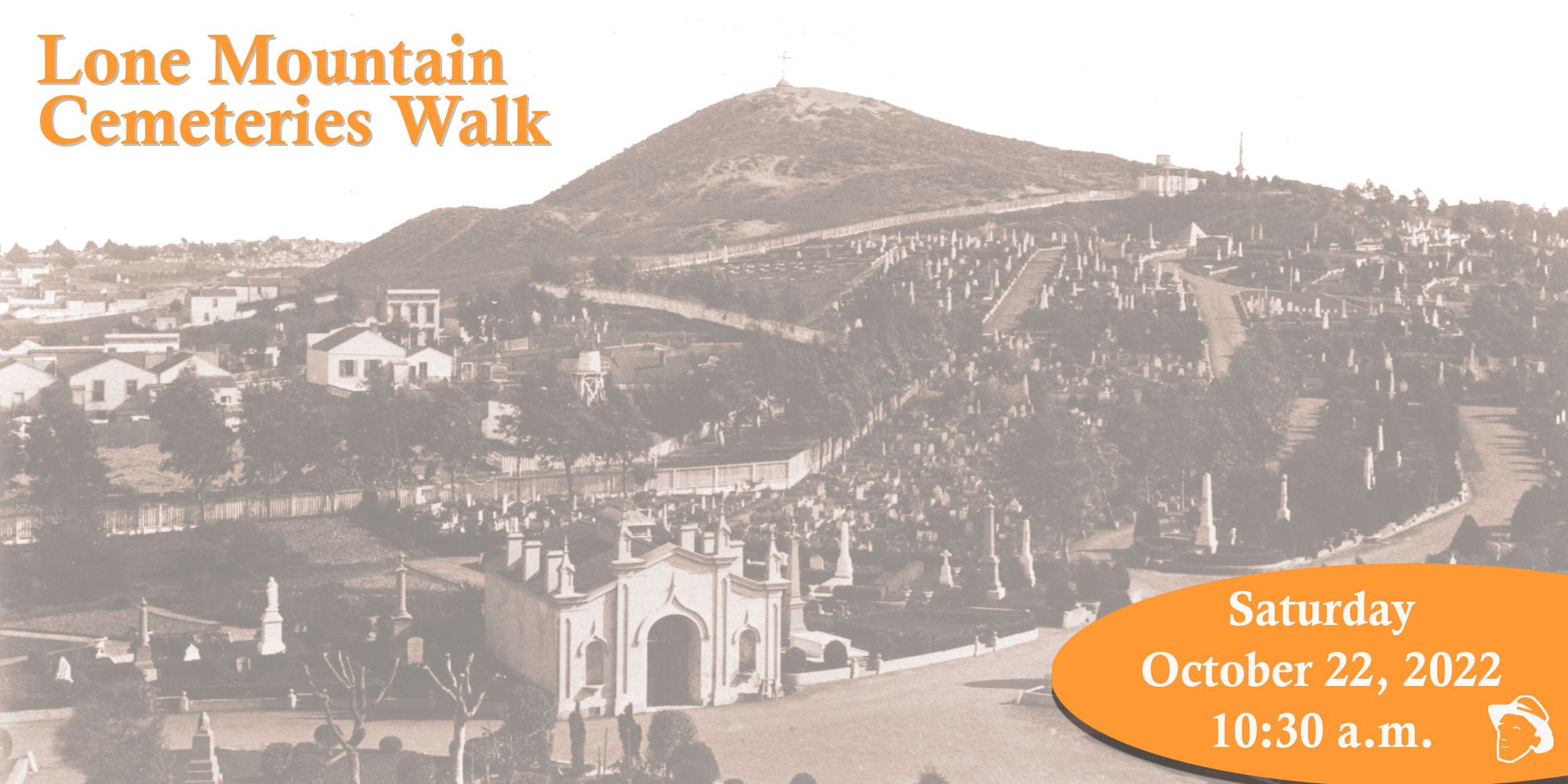
Sources
“The New Synagogue,” Daily Alta California, March 21, 1866, pg. 1.
Fred Rosenbaum, Visions of Reform: Congregation Emanu-El and the Jews of San Francisco 1849-1999, (Berkeley, CA: Judah L. Magnes Museum, 2000), pg. 53.
“Edifice Sold for $450,000,” San Francisco Examiner, January 20, 1923, pg. 11.
“Last Service Held in Noted Synagogue,” San Francisco Examiner, February 1, 1925, pg. 7.
“Cornerstone of Temple Laid,” San Francisco Examiner, February 23, 1925, pg. 9.
“63-Year-Old Relics Found,” San Francisco Examiner, February 11, 1926, pg. 10.
“New Temple Emanu-El is Hallowed to Human Needs,” San Francisco Chronicle, April 17, 1926, pg. 16.
“450 Sutter St. Nearly Ready,” San Francisco Examiner, July 6, 1929, pg. 6.

